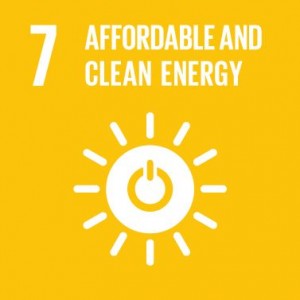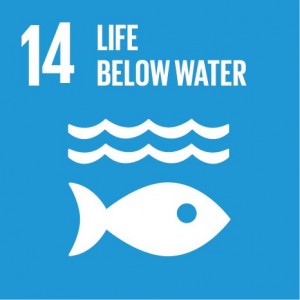Technological watch
Positive Thermomechanical Properties in New Bioplastic Films
By Hussain AhmedSep 21 2022Reviewed by Megan Craig, M.Sc.Bioplastics are comprised of polymers obtained from biological sources such as sugar cane, potato starch, and cellulose. The usage of bioplastic films in several applications, including packaging, food safety, and consumer electronics, reduces the reliance on fossil fuels and the production of non-biodegradable waste.
Study: Thermomechanical characterization of bioplastic films produced using a combination of polylactic acid and bionano calcium carbonate. Image Credit: Pawarun Chitchirachan/Shutterstock.com
In this regard, a recent study published in the journal Scientific Reports examines the thermomechanical properties of bioplastic films made from a combination of polylactic acid (PLA) and nano-calcium carbonate (nano-CaCO3).
Traditional Plastic-Based Materials: Overview and Harmful ImpactsThere has been tremendous growth in the consumption of plastic-based packaging products in recent years. The worldwide plastic market was estimated at 348.08 billion dollars in 2020 and is expected to grow on an annual basis. This anticipated yearly growth is due to the rapidly increasing requirement for plastic in a variety of packaging applications in the agriculture and medicinal industries.
The expanding global population and the usage of plastics in numerous industrial applications are the primary causes of growing plastic consumption. However, excessive plastic usage can significantly damage marine and terrestrial environments, resulting in pollution and the loss of numerous aquatic creatures.
Plastics such as high and low-density ethylene, polystyrene (PS), and polypropylene (PP) are extensively utilized for packaging purposes because of their lightness, durability, strength, and accessibility.
However, these plastics are derived from petroleum, and their widespread usage may result in a catastrophic lack of fossil fuels. Moreover, because of their low weight, they can move large distances, significantly contaminating both land and water.
Bioplastic Films: A Viable Alternative to Traditional PlasticsConventional plastic products may not be able to supply the need for plastics in the next decades owing to increased plastic consumption and the scarcity of fossil resources. As a consequence, alternative options to these problems are being explored. Substantial research is being conducted to generate polymers from renewable energy resources.
Biochemical systems can spontaneously recycle bioplastic films created from renewable materials such as vegetable oils and starches. Consequently, bioplastic films are environmentally friendly, recyclable, and biocompatible. Bioplastic films are also a sustainable alternative to traditional petrochemical-based plastic, reducing the consumption of fossil fuels and saving the environment.
Today, bioplastic films are being used in a variety of industrial applications, including food packaging, farming and horticulture, composting bags, and healthcare.
Related Stories
Enhancing the Performance of Bioplastic FilmsPolymeric substances such as polyvinyl alcohol (PVA), polycarbonate, and polylactic acid (PLA) have been extensively investigated for the production of bioplastic films because of their abundance and low cost.
PLA, in particular, is an essential bioplastic polymer because it is non-toxic, compostable, has high flexibility and strength, and may be employed in applications with a limited lifespan. However, PLA's strength decreases when subjected to heat because of its low thermal resistance qualities, implying that it should be reinforced with certain heat-resistant chemicals.
Over the past decade, researchers have investigated reinforcing bioplastic films with various biobased nanofillers. This is because carbon-based compounds like bionano calcium carbonate (nano-CaCO3) and cellulose derived from agricultural and animal products are considered to be promising for improving the heat resistance and mechanical capabilities of bioplastic films.
Highlights and Key Developments of Current StudyIn this study, the researchers used a blend of polylactic acid and bionano-calcium carbonate (nano-CaCO3) to effectively generate innovative bioplastic films. A simple solvent casting approach was used to create bioplastic films with various nano-CaCO3 concentrations.
The research looked at the conformational modifications in the functional group, thermal conductivity, and biodegradation of as-prepared bioplastic films with heat-dependent mechanical characteristics, including stiffness, storage elasticity, and loss modulus.
The findings reveal that adding nano-CaCO3 improves the thermal properties and decomposition of bioplastic films with temperature-dependent mechanical characteristics. Interfacial adhesion caused by atomic transfer slows the impact of temperature changes, leading to better thermal and mechanical characteristics.
After integrating nano-CaCO3, a minimal conformational modification in the functional groups of the produced bioplastic films was detected. This performance was ascribed to the suitability of the naturally derived polymer matrix (PLA) and nanofillers (nano-CaCO3).
Although all of the bioplastic films containing nano-CaCO3 showed better qualities than purified polylactic acid film, the bioplastic films with 1 wt% nano-CaCO3 concentration demonstrated optimum heat resistance properties. These enhanced qualities imply that PLA-based bioplastic films containing nano-CaCO3 developed in this study can find uses in various sectors, including packaging, medicine delivery, and food safety.
Storage modulus unfilled and nano-CaCO3 reinforced polylactic acid bioplastic films. © Gbadeyan, O. J., et al. (2022).
ReferenceGbadeyan, O. J., et al. (2022). Thermomechanical characterization of bioplastic films produced using a combination of polylactic acid and bionano calcium carbonate. Scientific Reports. Available at: https://www.nature.com/articles/s41598-022-20004-1
Disclaimer: The views expressed here are those of the author expressed in their private capacity and do not necessarily represent the views of AZoM.com Limited T/A AZoNetwork the owner and operator of this website. This disclaimer forms part of the Terms and conditions of use of this website.
Written by
Hussain AhmedHussain graduated from Institute of Space Technology, Islamabad with Bachelors in Aerospace Engineering. During his studies, he worked on several research projects related to Aerospace Materials & Structures, Computational Fluid Dynamics, Nano-technology & Robotics. After graduating, he has been working as a freelance Aerospace Engineering consultant. He developed an interest in technical writing during sophomore year of his B.S degree and has wrote several research articles in different publications. During his free time, he enjoys writing poetry, watching movies and playing Football.
Study: Thermomechanical characterization of bioplastic films produced using a combination of polylactic acid and bionano calcium carbonate. Image Credit: Pawarun Chitchirachan/Shutterstock.com
In this regard, a recent study published in the journal Scientific Reports examines the thermomechanical properties of bioplastic films made from a combination of polylactic acid (PLA) and nano-calcium carbonate (nano-CaCO3).
Traditional Plastic-Based Materials: Overview and Harmful ImpactsThere has been tremendous growth in the consumption of plastic-based packaging products in recent years. The worldwide plastic market was estimated at 348.08 billion dollars in 2020 and is expected to grow on an annual basis. This anticipated yearly growth is due to the rapidly increasing requirement for plastic in a variety of packaging applications in the agriculture and medicinal industries.
The expanding global population and the usage of plastics in numerous industrial applications are the primary causes of growing plastic consumption. However, excessive plastic usage can significantly damage marine and terrestrial environments, resulting in pollution and the loss of numerous aquatic creatures.
Plastics such as high and low-density ethylene, polystyrene (PS), and polypropylene (PP) are extensively utilized for packaging purposes because of their lightness, durability, strength, and accessibility.
However, these plastics are derived from petroleum, and their widespread usage may result in a catastrophic lack of fossil fuels. Moreover, because of their low weight, they can move large distances, significantly contaminating both land and water.
Bioplastic Films: A Viable Alternative to Traditional PlasticsConventional plastic products may not be able to supply the need for plastics in the next decades owing to increased plastic consumption and the scarcity of fossil resources. As a consequence, alternative options to these problems are being explored. Substantial research is being conducted to generate polymers from renewable energy resources.
Biochemical systems can spontaneously recycle bioplastic films created from renewable materials such as vegetable oils and starches. Consequently, bioplastic films are environmentally friendly, recyclable, and biocompatible. Bioplastic films are also a sustainable alternative to traditional petrochemical-based plastic, reducing the consumption of fossil fuels and saving the environment.
Today, bioplastic films are being used in a variety of industrial applications, including food packaging, farming and horticulture, composting bags, and healthcare.
Related Stories
- Nanotube Films Open Up New Prospects for Electronics
- New Book "Nanotechnology and Homeland Security: New Weapons for New Wars" Published By Prentice Hall
- Sustainable Cellulose Nanocrystals have Amino Acid Dependent Optical Properties
Enhancing the Performance of Bioplastic FilmsPolymeric substances such as polyvinyl alcohol (PVA), polycarbonate, and polylactic acid (PLA) have been extensively investigated for the production of bioplastic films because of their abundance and low cost.
PLA, in particular, is an essential bioplastic polymer because it is non-toxic, compostable, has high flexibility and strength, and may be employed in applications with a limited lifespan. However, PLA's strength decreases when subjected to heat because of its low thermal resistance qualities, implying that it should be reinforced with certain heat-resistant chemicals.
Over the past decade, researchers have investigated reinforcing bioplastic films with various biobased nanofillers. This is because carbon-based compounds like bionano calcium carbonate (nano-CaCO3) and cellulose derived from agricultural and animal products are considered to be promising for improving the heat resistance and mechanical capabilities of bioplastic films.
Highlights and Key Developments of Current StudyIn this study, the researchers used a blend of polylactic acid and bionano-calcium carbonate (nano-CaCO3) to effectively generate innovative bioplastic films. A simple solvent casting approach was used to create bioplastic films with various nano-CaCO3 concentrations.
The research looked at the conformational modifications in the functional group, thermal conductivity, and biodegradation of as-prepared bioplastic films with heat-dependent mechanical characteristics, including stiffness, storage elasticity, and loss modulus.
The findings reveal that adding nano-CaCO3 improves the thermal properties and decomposition of bioplastic films with temperature-dependent mechanical characteristics. Interfacial adhesion caused by atomic transfer slows the impact of temperature changes, leading to better thermal and mechanical characteristics.
After integrating nano-CaCO3, a minimal conformational modification in the functional groups of the produced bioplastic films was detected. This performance was ascribed to the suitability of the naturally derived polymer matrix (PLA) and nanofillers (nano-CaCO3).
Although all of the bioplastic films containing nano-CaCO3 showed better qualities than purified polylactic acid film, the bioplastic films with 1 wt% nano-CaCO3 concentration demonstrated optimum heat resistance properties. These enhanced qualities imply that PLA-based bioplastic films containing nano-CaCO3 developed in this study can find uses in various sectors, including packaging, medicine delivery, and food safety.
Storage modulus unfilled and nano-CaCO3 reinforced polylactic acid bioplastic films. © Gbadeyan, O. J., et al. (2022).
ReferenceGbadeyan, O. J., et al. (2022). Thermomechanical characterization of bioplastic films produced using a combination of polylactic acid and bionano calcium carbonate. Scientific Reports. Available at: https://www.nature.com/articles/s41598-022-20004-1
Disclaimer: The views expressed here are those of the author expressed in their private capacity and do not necessarily represent the views of AZoM.com Limited T/A AZoNetwork the owner and operator of this website. This disclaimer forms part of the Terms and conditions of use of this website.
Written by
Hussain AhmedHussain graduated from Institute of Space Technology, Islamabad with Bachelors in Aerospace Engineering. During his studies, he worked on several research projects related to Aerospace Materials & Structures, Computational Fluid Dynamics, Nano-technology & Robotics. After graduating, he has been working as a freelance Aerospace Engineering consultant. He developed an interest in technical writing during sophomore year of his B.S degree and has wrote several research articles in different publications. During his free time, he enjoys writing poetry, watching movies and playing Football.
















